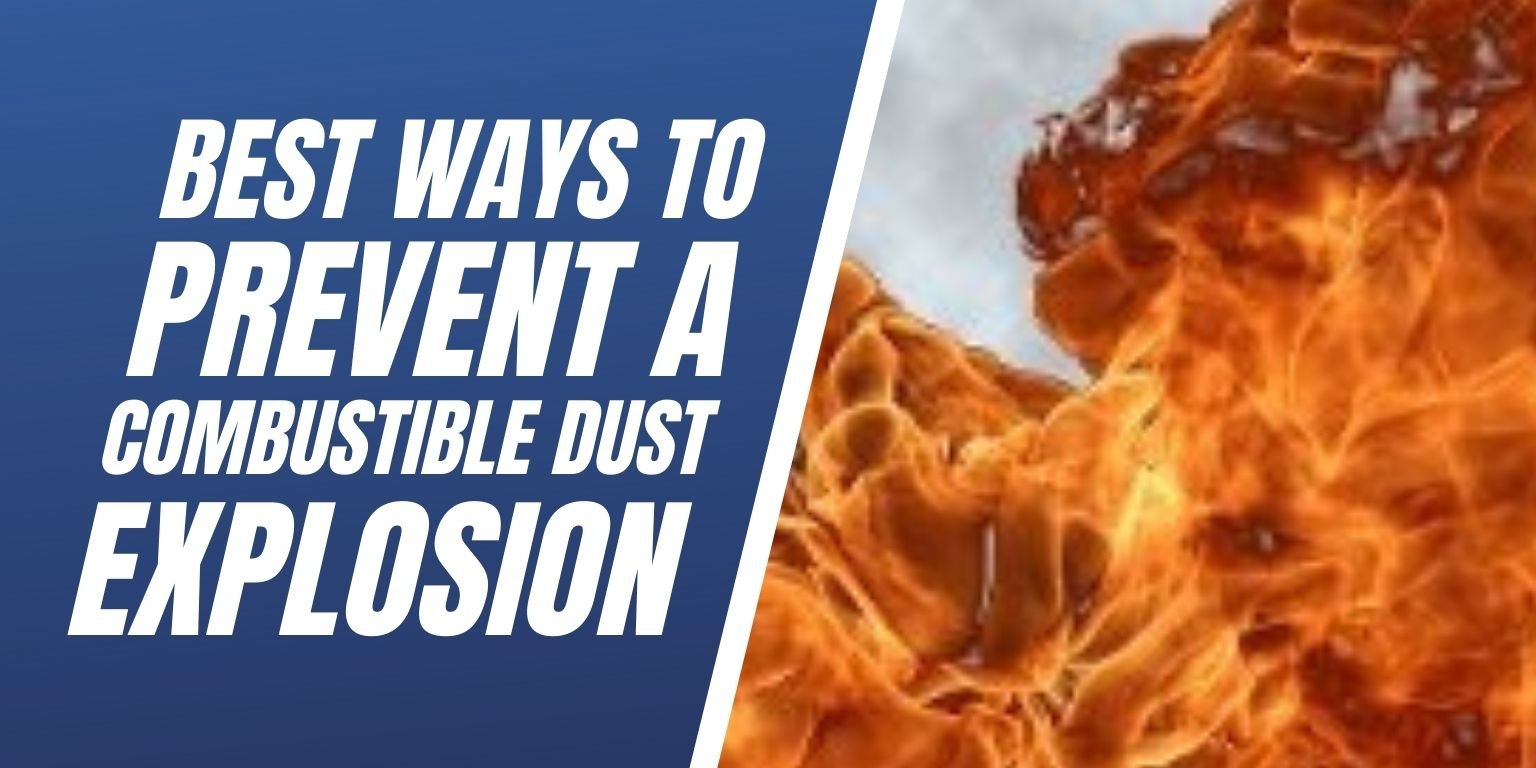
The manufacturing or processing of materials such as wood, plastics, fossil fuels, food, paper, textiles, metals and chemicals can generate dust that is combustible. Combustible dust collected in visible areas, on high surfaces, as well as in the ductwork are a source of industrial fires and explosions. It’s usually when an employee or inspector notices the dust levels on these surfaces is higher than what code allows that we get called to come out and safely clean it for our customers. But how exactly does a dust explosion happen, and what are the best ways you can prevent a combustible dust explosion?
For a fire to burn it needs three elements present simultaneously: Fuel, Ignition, and Oxygen – also known as the “Fire Triangle”. But for a combustible dust explosion, two additional elements are needed to form what is known as the “Dust Explosion Pentagon”. These two elements are Confinement and Dispersion. They are created when the fuel, in this case combustible dust, is spread out as a dust cloud within a closed area, such as a factory or warehouse. However, taking away even one of these elements can remove the risk of a dust explosion; however the risk for a fire can still be present.
The Best Element to Remove to Prevent a Combustible Dust Explosion is the Fuel or the Dust itself!
Proper combustible dust cleaning is one of the most effective ways to prevent a dust explosion. By taking away the fuel from the dust explosion pentagon it removes the risk of an explosion, and also removes the possibility for a fire. The NFPA combustible dust standards outline the best methods for cleaning this dust, which should only be done by a trained professional.
Through the course of everyday production dust from the manufacturing process gets blown around landing on high surfaces. Since these areas are out of reach and typically out of mind, they are not regularly cleaned. This allows the industrial dust on the ceiling and rafters to continue to increases while the rest of the building appears clean. Usually there is a small fire or explosion that happens with the ground level dust, and the shockwaves or the attempt to put it out disrupts the dust on high surfaces. This causes the dust to fall down creating a dust cloud over the whole building. This cloud reaches the initial ignition source, causing it to combust. These secondary dust cloud combustions have had enough power to lift entire roofs from buildings, buckle concrete floors, and demolish entire factories.
Dust created from the manufacturing process is dispersed throughout the facility and over time, is brought into the ventilation ductwork as air flows through the building. The dust will settle in sections of the duct where there is a bend or anything that might prevent the dust from continuing to flow through the duct. The constant movement of air causes potential ignition sources to be drawn into the ductwork. Sparks and embers can stay hot for a long enough time, and when sucked into the HVAC system can come into contact with the dust or a piece of metal traveling through the ductwork can scrape the side and cause an ignition spark. The dust moving through the duct also creates a buildup of static electricity, which can have the potential to create an explosion.
Also, keeping machinery properly maintained and cleaned will prevent it from sparking during operation, which is the largest cause of explosions. Just think- if one of your machines isn’t greased properly it could spark and cause an explosion that destroys your entire factory.
Other problem areas that could be prevented include friction, static electricity, and electrical equipment. Steps can be taken to ease frictions points, dissipate static electricity, and ground electrical equipment, but sometimes the risk from these ignition sources isn’t able to be completely prevented. In these cases it is essential that the combustible dust be removed from the area, so that even if one of these ignition sources is created it doesn’t have anything larger to ignite.
For more information on the best way to prevent a combustible dust explosion, call us at 888-845-3952 to find our how Hughes can help keep your facility clean and safe!

